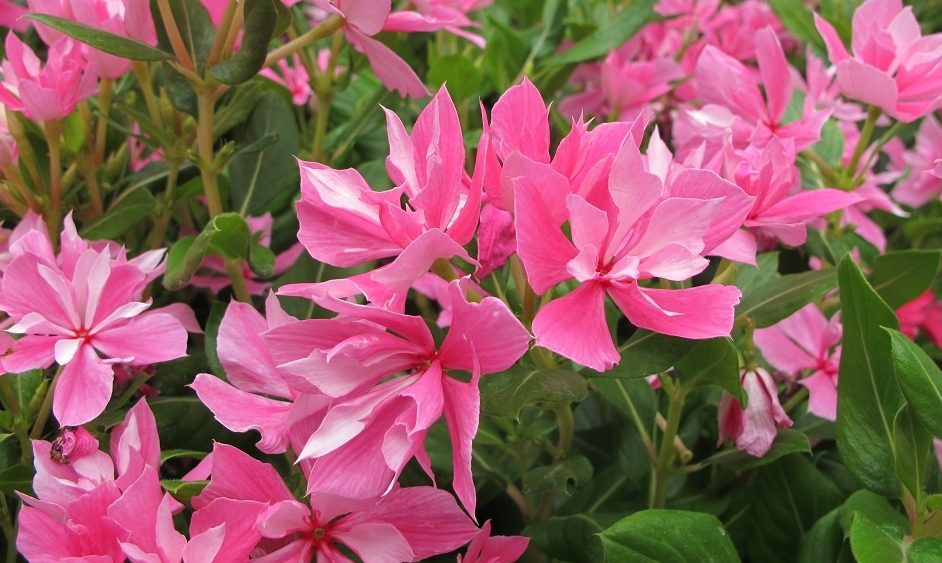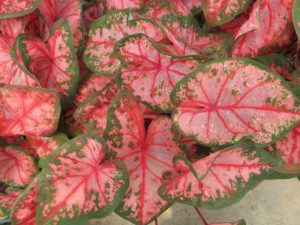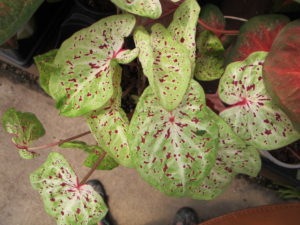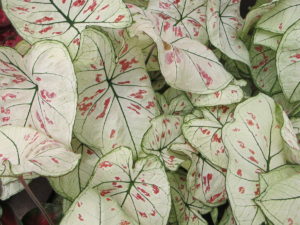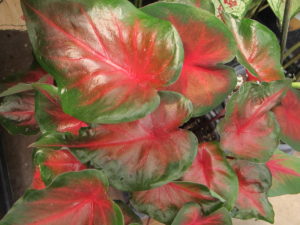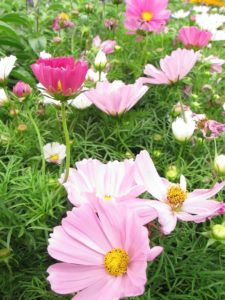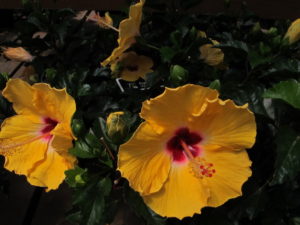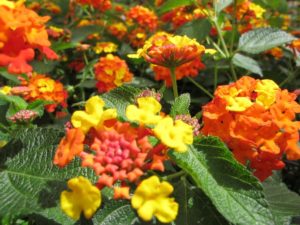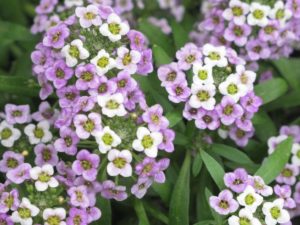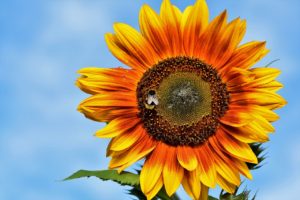Page 2
Heat-Tolerant Annuals
No, it’s not too late to plant colorful annuals for the summer. I’m always amazed how resilient these plants are. Surrounded by blacktop, sitting on a hot flagstone patio, or sandwiched between a boulder and the brick sidewalk, they adapt quite well. Many, after all, came from Mexico, South America, South Africa, or Australia!
Now, that doesn’t necessarily mean that all of them like drought or searing sun, but with proper watering and occasional fertilizing, they should thrive through the summer. If the plants are stressed, move the pots to an area that gets morning sun but is shaded in the hot afternoon hours.
Most attract a wide variety of pollinators—butterflies, moths, bees, and hummingbirds. Although garden centers stock double- and triple-flowering hybrids, these plants often lack sufficient nectar and pollen needed by pollinators. Annuals and other plants with simpler flowers or single rows of petals will attract more pollinators.
- Ageratum–True blue! Cut flowers from upright varieties.
- Angelonia–A few years ago, when we were under water restrictions, the plant that lasted the longest among the dozen or so types of annuals here, was Angelonia. Upright grower; spikes in white, pinks, blues, purple. Usually planted yearly, but often perennial in USDA plant hardiness zones 9-11.
- Begonia–Many species. The bushy wax begonia holds up to heat, especially if it’s not planted in hot afternoon sun. ‘Torch’, afternoon shade, came with me from Maryland and has held up in these hot summers.
- Brugmansia–Angel’s trumpet. Large flowers, large plant. Poisonous, but stunning!
- Caladium–Arrowhead-shaped leaves in white, green, chartreuse, pink, coral, red. Ask for “de-eyed” tubers. More shade than sun, in heat. Will fail if planted too early in cool soil. Moist, fertile soil; provide high nitrogen fertilizer for continuous growth. Deer are fond of this one. Usually grown as annuals, or overwinter tubers indoors. A personal favorite.
- Calibrachoa–Million bells. Many colors–solids, stripes, bicolors. Cut back periodically, if needed. Must have acidic soil to prevent chlorosis. Related to petunia. Nice in combination pots.
- Canna–Bold, tropical foliage with flowers at the top of the shoots. Some variegated forms are showy even without flowers. Don’t buy the ones with virus-infected brown streaking through the leaves. For large containers. Perennial here in zone 7b.
- Celosia–Flowers in plumes above the foliage, many colors. Usually grown as an annual, but can perennialize in zones 9-11. Cut flowers.
- Coleus–Solenostemon. Many color combinations in the leaves, and another good plant for combination pots. Short to tall bushy “shrubs”. Cut back overgrown plants; remove flowers.
- Cosmos–One of my favorite annuals. Finely-cut foliage and pink, white, and deep red flowers. Another species has wider leaflets and yellow and orange flowers. Cut flowers, easy from seed.
- Cuphea–Cigar plant, bat face, and others.
- Dipladenia–Similar to Mandevilla, but has smaller glossy leaves and is more bushy.
- Elephant Ears–Alocasia, Colocasia. Large, bold, foliage plants, green to almost black, sometimes with splashes in contrasting colors. Leaves arrowhead shaped, some with rippled margins.
- Evolvulus–Related to morning glory. True blue flowers. Loves the heat.
- Gaillardia–Blanket flower, both annuals and perennials. Cut flowers.
- Geranium–Pelargonium. ‘Calliope’ is more heat-tolerant than most strains.
- Gomphrena–Globe amaranth. Short or upright plants, white, pink, red, purple flowers. Cut flowers.
- Hibiscus–Annuals or perennials; check USDA hardiness zones. Large tropical blooms form daily. Takes the heat, but keep moist.
- Impatiens–New Guinea hybrids do well, moist soil, part sun. Short bedding impatiens have been bred for downy mildew resistance, bright shade, morning sun. Also attracts hummingbirds, pollinators.
- Lantana–Small or medium sized shrubby/weedy plants, but look for compact varieties. Tolerates drought when established. White, yellow, orange, pink, red, also multicolored. Attracts pollinators. Takes the heat, and is cold hardy in zone 8 or 9.
- Licorice plant–Helichrysum. Trailing silver or yellow-variegated fuzzy leaves, nice in combination pots. But sometimes bothered by leaf miner part of the season.
- Lobularia–Like sweet alyssum on steroids, and a favorite! Short, but grows to 2 1/2′ wide, white, lavender fragrant flowers, moist soil.
- Mandevilla–Strong vine with white, pink, red flowers, large leaves. Takes the heat, even in the tropics.
- Marigold–Tagetes. Many cultivars with whitish, yellow, gold, orange, rusty-red flowers. Cut flowers, also edible petals.
- Melampodium--Gold flowers.
- Moonflower–Ipomoea. Vigorous climber, 8-15′. Large fragrant white flowers, evenings and through the night. Blooms earliest during short days, although, if planted late, it will bloom when the days shorten in late summer. Related to morning glory, which also grows in heat, many colors, and is poisonous.
- Pentas–Clusters of inflorescences above the foliage attract pollinators.
- Persian Shield–Strobilanthes. Metallic purple and green foliage. Cut back overgrown plants.
- Petunia–many colors, and newer varieties are more heat resistant. Bicolor or spotted flowers might vary in pattern or color at different temperatures. Might perennialize in zones 9-11. Hummingbirds, butterflies.
- Plumbago–Vining/shrubby African plant with either white or sky-blue flowers. Perennial in zones 9-11.
- Portulaca–Moss rose, tolerates drought. Needle-like foliage or wider succulent leaves. Bright colorful flowers open in sun.
- Rudbeckia–Black-eyed Susan. Large brightly colored flowers, yellow, gold, orange, rusty-red, many with central cone. Cut flowers. Attracts pollinators; also, finches and other birds love the seeds. Annual and perennial varieties.
- Salvia–Huge number of species! Many are perennial, but the annuals bloom heavily through the season. Hummingbird magnets.
- Scaevola–Fanflower. Great in baskets, combinations. Blue, white, pink. More compact now than originally, but those old spreading varieties quickly filled a space; hard for growers to manage in flats, though. From Australia, so it loves the heat.
- Sunflower–Helianthus. Easy from seed, planted in warm soil. A few varieties stay below 2′, but most grow 3′ to 7′ tall. “Pollenless” varieties are tidy in arrangements, but they don’t develop edible seeds. Birds and pollinators love the huge ‘Mammoth’ types, which have pollen and nectar.
- Tithonia–Mexican sunflower. Short and tall varieties, orange flowers, tolerates drought. Attracts pollinators. Takes a while to grow before it flowers.
- Verbena–Many colors. Creeping to shrubby. Nice in combinations with contrasting flower forms, such as with petunia and calibrachoa. Water regularly, but watch for spider mites and thrips (use horticultural oil or a systemic insecticide; read the label). V. bonariensis is a “see-through” perennial, with tall thin stems topped by purple flowers. Also loved by pollinators.
- Vinca–Catharanthus. Has both upright and trailing varieties, white, peach, pink, red flowers; contrasting eye in some cultivars. Heat resistant. Not the same vinca as the perennial ground cover. (New double vinca–photo at top of page 2.)
- Zinnia–Easily grown from seed. Attracts pollinators. Dwarf to tall varieties, cut flowers. Some have problems with powdery mildew and other diseases in humid weather, so look for disease resistance (Z. angustifolia, and others). Loves the heat. Butterflies love it.
That’s a good start. Enjoy the festivities, be safe, and Long Live America!
Headings
Page 1: Happy 4th of July!, Mulch the Beds (Types of Mulch, Gravel In the Garden, Landscape Fabric), Water the Garden Beds (About the Hose), Water and Potting Soil (Amendments For Annuals, Amending After the Fact, Fertilizing Annuals, Slow-Release Fertilizer), Pot Colors (Winter Pots, Evaporative Cooling), Nursery-Grown Landscape Plants (Why New Plants Sometimes Fail, When Can I Plant?), Reservoirs and Saucers (Planting Wire Hanging Baskets), and So, It’s Your Turn To Host the Party
Page 2: Heat-Tolerant Annuals
